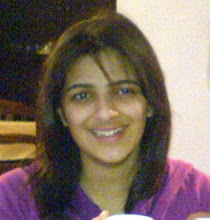
Saturday, 1st August
I have become a creature of the night. Stairs creak as I skulk around at 5am, trying not to wake up the rest of the household. Wolfing down my cereal, I gaze outside at evanescent shades of darkness, and realise that I have not seen sunlight in 4 days. I hurriedly assemble a cheese and tomato sandwich, cut it in half and wrap it in some foil: this will be my sustenance over the gruelling day ahead. Throwing my rucksack over one shoulder, I walk out of the house and begin my trek towards the Emory shuttle bus-stop. Within moments of stepping outside, I am greeted by Atlanta’s all-consuming humidity: as the ink-blue sky begins to dilute, the crickets chirp at my feet and a thin film of condensation envelopes itself around me.
It’s still not quite daylight when I reach Emory University Hospital at 06:20, though the sun will soon rise, its baking rays marching mercilessly towards their noon-time crescendo.
Inside, the air-conditioned hospital is a picture of luxury: the lobby is marble-floored, and decked with gold-framed portraits of important-looking men from the 19th century. Fine leather sofas fill the spacious flooring, and stand underneath impossibly large chandeliers. Copies of the “Atlanta” magazine are scattered on all table tops as the cover features Dr Daniel Barrow, Emory’s vascular neurosurgeon, named as “Atlanta’s top doctor”.
It’s my 4th day, and I finally know where I’m going – hopefully I’ll only get lost once.
My uniform consists of Emory scrubs, a short white coat (denoting medical student status) and trainers. I have purposefully left behind the stethoscope: apparently it’s very “non-neurosurgical”. To the patients and other staff, I look every part the Emory medical student in Neurosurgery. Yet I still feel foreign and somewhat out of my depth: what am I doing in a huge place like this, making decisions for patients and consorting with some of the world’s most famous neurosurgeons? It’s like a bizarre dream intermingled with fear of the unknown.
Luckily, I don’t get lost and successfully make my way to the residents’ on-call room in the Neuro-ICU, my base for the next few weeks. Here, I receive a very American greeting as I am high-fived by Nitin, the junior resident on night-call: “Yo dude, how’s it hanging?” he enquires. “Erm…good thanks” I mumble through a series of poorly-stifled yawns. With the other junior residents, I grab coffee and then we head to the conference room for the morning sign-out. This is a multidisciplinary meeting with Neurologists, Intensivists and other critical care staff, during which the status of each neurosurgical patient is reviewed, and decisions made as to their care. Nitin updates everyone on the new overnight admissions, and we finish with the morning ward round in the ICU. This meeting can often take a while, as Emory is a phenomenally large Neurosurgical unit catering for patients within a 200-mile radius. This often means that we get critically ill patients from far-flung areas of Georgia, and sometimes even from other states.
The operating list starts promptly at 07:30, and I am supposed to scrub in to every procedure, helping the residents with their work. Often, residents will do the bulk of the procedure i.e. opening and closing, with the attending coming in only for the difficult and dangerous part which requires enormous technical expertise. So far, it has been a fascinating experience, as I have observed and helped with craniotomies (i.e. drilling burr holes through the skull and removing a flap of bone) and craniectomies. I have rapidly had to learn how to perform surgical throws and ties, as there are absolutely key to the art of suturing. It is incredible to watch the surgeons deftly manipulating thin pieces of thread through their fingers, which move at dizzying speed: every move requires a high degree of focus and accuracy.
After the bone is drilled through and a piece removed, the underlying brain covering, the dura mater, is exposed. This is a delicate lining which covers the brain and spinal cord, themselves bathed in cerebrospinal fluid. The resident cuts a flap through the dura, and stitches this to the skull, in order to ensure that blood doesn’t collect between the bone and dura (extradural haematoma). Now, the brain tissue itself meets our eyes, its intricate network of blood vessels, grooves and folds glistening under the brutal surgical lights. Only attendings have the required expertise to navigate safely through this dense highway of neurones, and the residents greet them with a respectful “sir” as they stride into the OR, like knights on horseback. I watch the rest of the operation on a television screen, as the attendings are performing microsurgery to remove tumours, or clip blood vessels.

No comments:
Post a Comment